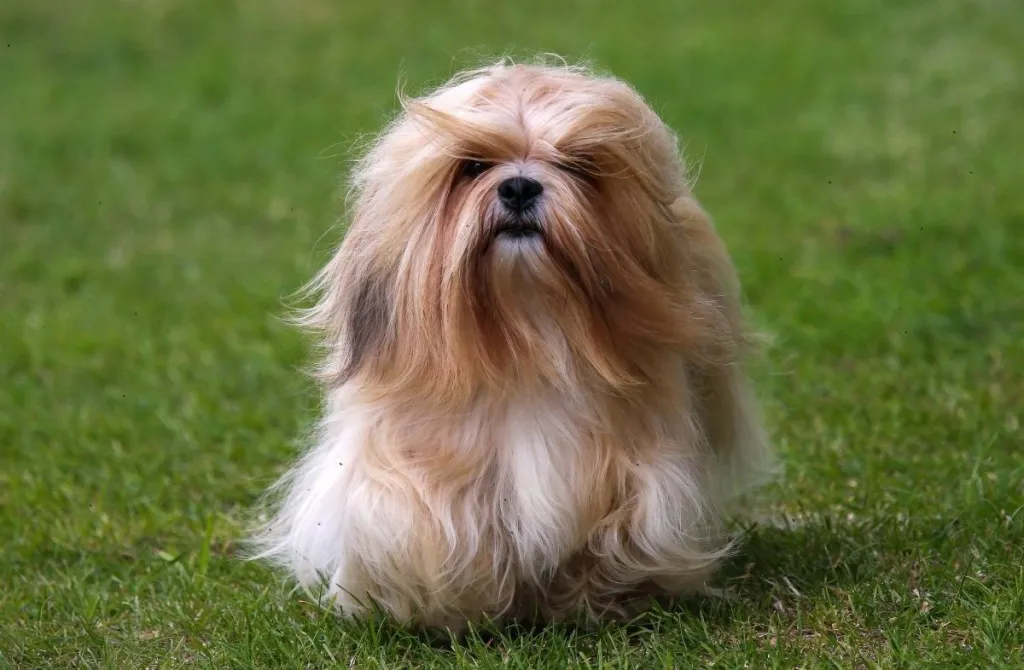Hey there, fellow dog enthusiasts! Today, we embark on an exciting journey into the world of the Lhasa Apso—a breed steeped in history, known for its distinctive appearance, and cherished for its loyalty and companionship. Join me as we unravel the mysteries and marvels of this fascinating canine.
Origins and Historical Significance
The Lhasa Apso originates from Tibet, where it served as a sentinel in Buddhist monasteries and homes of Tibetan nobility centuries ago. Revered for its keen senses and alert nature, the Lhasa Apso was considered a symbol of good luck and protection.
Throughout history, these dogs were treasured companions, often gifted to visiting dignitaries and esteemed guests. Their lineage reflects a deep connection to Tibetan culture, where they were bred to be resilient, independent thinkers capable of thriving in harsh mountainous terrain.
Physical Characteristics
Lhasa Apsos are small but sturdy dogs, typically weighing between 12 to 18 pounds and standing around 10 to 11 inches tall at the shoulder. They boast a luxurious double coat that can come in a variety of colors, including shades of gold, cream, honey, or slate.
Their distinctive feature is their long, flowing coat, which requires regular grooming to maintain its health and beauty. The characteristic topknot and beard add to their regal appearance, highlighting their dignified and ancient lineage.
Temperament and Personality
One of the most captivating aspects of the Lhasa Apso is its spirited yet affectionate personality. Known for their independence and confidence, Lhasa Apsos are loyal companions who form strong bonds with their families but may be reserved with strangers.
Despite their small size, they possess a big personality with a playful and sometimes stubborn streak. Early socialization and positive reinforcement training are essential to channel their intelligence and ensure they become well-mannered and adaptable adults.
Living with a Lhasa Apso: Care and Considerations
Owning a Lhasa Apso requires attention to their grooming and exercise needs. Their long coat requires regular brushing to prevent matting and tangling, as well as occasional trimming to maintain a manageable length.
Daily exercise, such as walks and playtime, helps keep Lhasa Apsos physically fit and mentally stimulated. They thrive in environments where they can engage in activities that challenge their intelligence and satisfy their natural curiosity.
Health and Wellness
Lhasa Apsos are generally healthy dogs with a lifespan of 12 to 15 years. However, they may be prone to certain health conditions, including:
Patellar Luxation: A condition where the kneecap may temporarily slip out of place, causing discomfort or lameness.
Progressive Retinal Atrophy (PRA): An inherited disease that can lead to vision loss over time.
Regular veterinary check-ups, a balanced diet, and maintaining an appropriate weight are essential for preventing and managing these health concerns. Responsible breeding practices aim to reduce the incidence of hereditary diseases in Lhasa Apso puppies.
Training and Socialization
Training a Lhasa Apso should start early to establish boundaries and reinforce desired behaviors. They respond well to positive reinforcement techniques such as treats and praise, which help them learn and retain commands effectively.
Socialization is equally important to expose them to various people, pets, and environments from a young age. This helps them develop confidence and ensures they interact well with others throughout their lives.
Feeding and Nutrition
Providing a balanced diet is crucial for the health and well-being of Lhasa Apsos. Choose high-quality dog food formulated for small breeds, taking into account their age, size, activity level, and any specific dietary needs or preferences.
Divide their daily food intake into two meals to prevent digestive issues and maintain stable energy levels. Fresh water should always be available to keep them hydrated, especially after exercise or during warmer weather.
Consult with your veterinarian for personalized feeding recommendations based on your Lhasa Apso’s individual needs and any health considerations they may have.
Finding a Lhasa Apso: Adoption and Breeder Considerations
If you’re considering adding a Lhasa Apso to your family, consider these options:
Adoption: Many Lhasa Apsos are available for adoption through rescue organizations and breed-specific rescues. Adopting a dog provides a loving home to a deserving animal and may be more affordable than purchasing from a breeder.
Reputable Breeders: When choosing a breeder, look for one who prioritizes the health and well-being of their dogs. Responsible breeders conduct health screenings, provide proper socialization for puppies, and offer ongoing support to new owners.
Avoid supporting puppy mills or unethical breeders who prioritize profit over the welfare of the dogs. Conduct thorough research, visit facilities if possible, and ask for references to ensure you’re making an informed decision.
Conclusion
In conclusion, the Lhasa Apso embodies a blend of ancient lineage, regal demeanor, and loyal companionship that continues to captivate dog lovers worldwide. Their distinctive appearance and spirited personality make them cherished pets and esteemed members of any household.
Owning a Lhasa Apso is a commitment to providing love, care, and attention to a dog who will enrich your life with their unique charm and devotion. With proper care, training, and understanding of their needs, your Lhasa Apso will thrive as a beloved companion for many years to come.
Are you ready to welcome a Lhasa Apso into your life? Prepare for a lifetime of laughter, love, and unforgettable moments with a dog who embodies history, elegance, and unwavering loyalty.
- Best Hunter.io Alternatives for 2025 - April 19, 2025
- Best Lead411 Alternatives for 2025 - April 19, 2025
- Best Leadzai Alternatives for 2025 - April 18, 2025



